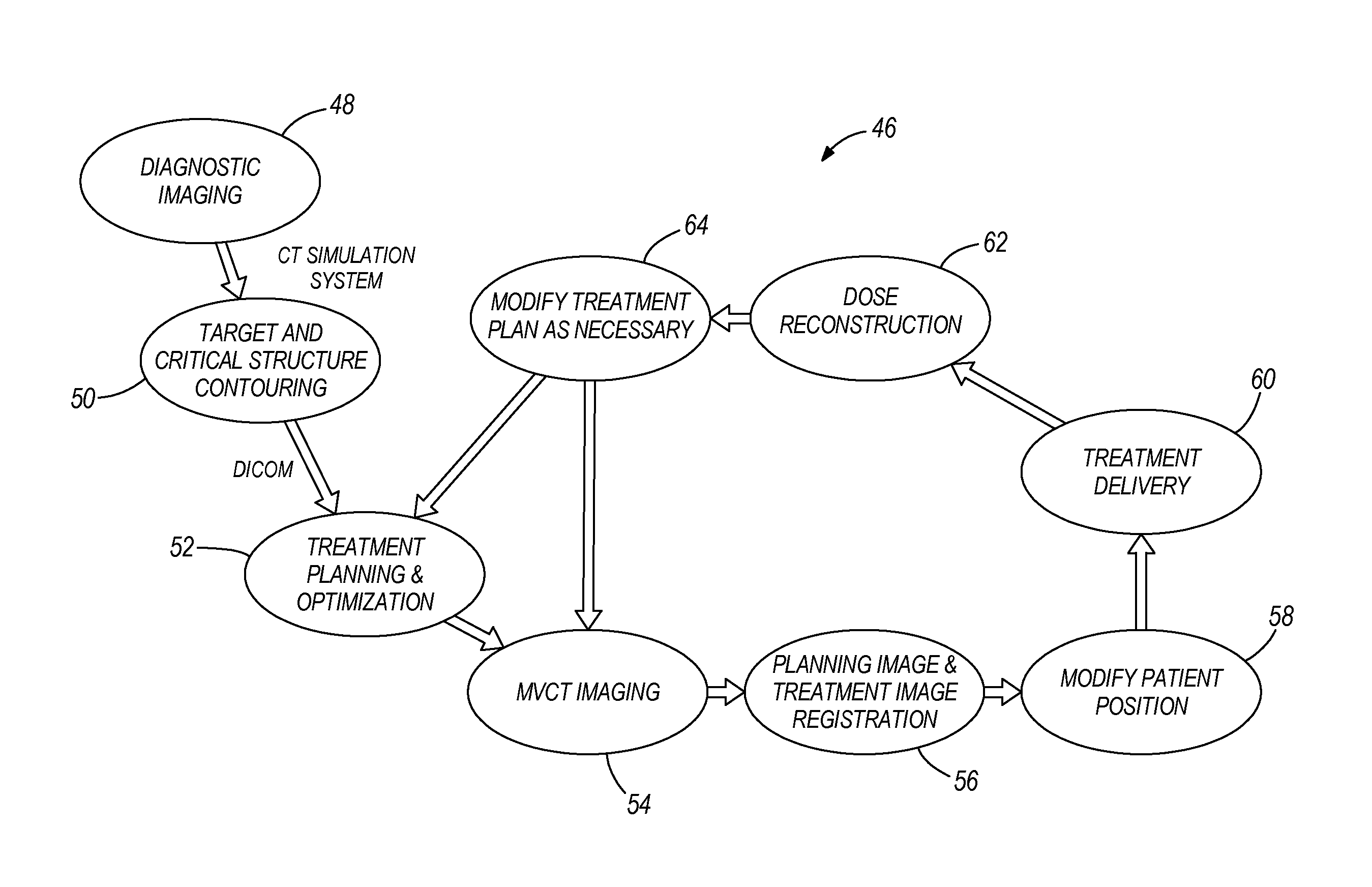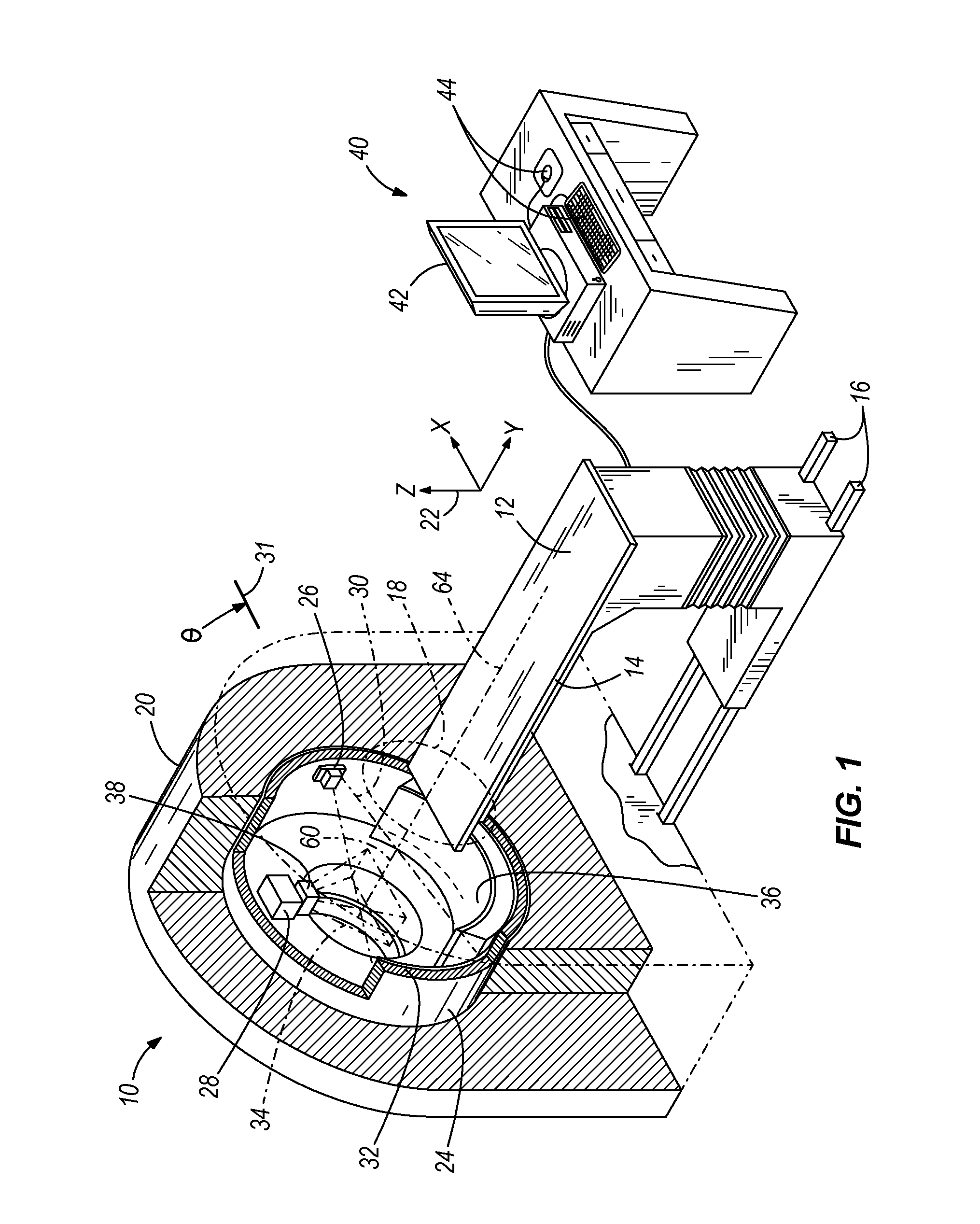Method for modification of radiotherapy treatment delivery
a radiotherapy and treatment delivery technology, applied in the field of intensity modulated radiation therapy, can solve the problems of insufficient speed of the process to be performed on-line, structure may not receive the planned dose, and sensitive structures may be impacted, so as to reduce the dose of sensitive structures, increase the time a patient is on the treatment table, and avoid additional harm to sensitive structures
- Summary
- Abstract
- Description
- Claims
- Application Information
AI Technical Summary
Benefits of technology
Problems solved by technology
Method used
Image
Examples
Embodiment Construction
[0041]Referring now to FIG. 1, a radiation therapy machine 10, suitable for use with the present invention, includes a radiotranslucent table 12 having a cantilevered top 14. The table top 14 is received within a bore 18 of an annular housing 20 of the radiation therapy machine 10 with movement of the table 12 along tracks 16 extending along a z-axis of a Cartesian coordinate system 22.
[0042]Table 12 also includes an internal track assembly and elevator (not shown) to allow adjustment of the top 14 in a lateral horizontal position (indicated by the x-axis of the coordinate system 22) and vertically (indicated by the y-axis of the coordinate system 22). Motion in the x and y directions are limited by the diameter of the bore 18.
[0043]A rotating gantry 24, coaxial with the bore 18 and positioned within the housing 20, supports an x-ray source 26 and a high energy radiation source 28 on its inner surface. The x-ray source 26 may be a conventional rotating anode x-ray tube, while the ra...
PUM
 Login to View More
Login to View More Abstract
Description
Claims
Application Information
 Login to View More
Login to View More - R&D
- Intellectual Property
- Life Sciences
- Materials
- Tech Scout
- Unparalleled Data Quality
- Higher Quality Content
- 60% Fewer Hallucinations
Browse by: Latest US Patents, China's latest patents, Technical Efficacy Thesaurus, Application Domain, Technology Topic, Popular Technical Reports.
© 2025 PatSnap. All rights reserved.Legal|Privacy policy|Modern Slavery Act Transparency Statement|Sitemap|About US| Contact US: help@patsnap.com



